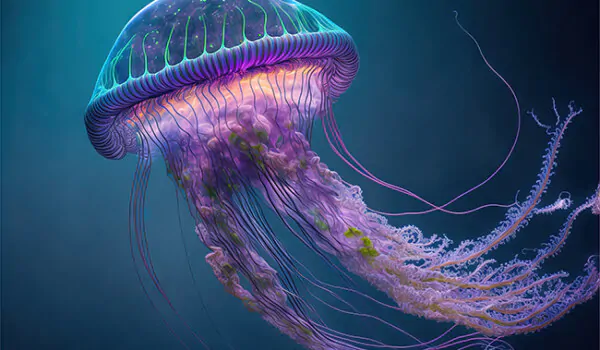
I’m curious about how bioluminescent organisms create light. Can someone explain the process by which these creatures produce their own light? I’m fascinated by bioluminescence in fireflies, deep-sea creatures, and other organisms, but I’m not sure how they generate light. Any info regarding the mechanisms behind bioluminescence would be greatly appreciated!

The bioluminescent organisms produce light using the chemical process known as bioluminescence. This process involves two key components: luciferin is a light-emitting molecule and luciferase is an enzyme. Here’s how the process works:
Luciferin and Luciferase Interaction: Oxygen takes part in the process where luciferin and the luciferase enzyme bind together. Such communication causes a chemical reaction.
Chemical Reaction: In the course of the reaction, the luciferin molecule undergoes a structural change and the energy comes out as light. Enzyme luciferase functions as a catalyst allowing the reaction to progress without being consumed or transformed.
Light Emission: When the luciferin gets back to its original state the excess energy is released as light particles or photons. The particular wavelength (color) of the emitted light is decided by the construction of the luciferin molecule and the organism’s chemistry.
Different forms of bioluminescent species have evolved various luciferase enzymes and luciferin molecules which cause emission of different colors of light. Similarly, the different species of fireflies produce yellowish-green light while some deep-sea organisms produce blue or red light.
The bioluminescence process is a low-energy and inconspicuous way for animals to create light without generating much heat. It serves different roles, for example, it might help in choosing a mate, capturing the prey, or lighting a dark place. It should be noted that bioluminescence differs from the phenomenon of fluorescence in that the light is absorbed and re-emitted at a different wavelength. Luminescence and humors are a chemical process of light production and light absorption followed by its re-emission.
Bioluminescent organisms produce light through a chemical reaction involving luciferin and an enzyme called luciferase. When luciferin reacts with oxygen in the presence of luciferase, it releases energy in the form of light. This reaction occurs in special structures called photophores or light-emitting organs within the organism’s body. The light produced can vary in color and intensity depending on the species. Many bioluminescent organisms, such as fireflies and certain types of marine life, use this ability for various purposes, including attracting mates, camouflage, and communication. Bioluminescence is common in deep-sea environments where sunlight does not penetrate, but it also occurs in terrestrial organisms like fireflies. Overall, bioluminescence is a fascinating adaptation that allows organisms to emit light without the need for external sources of illumination.
Bioluminescent organisms produce light through a chemical reaction involving luciferin and an enzyme called luciferase. When luciferin reacts with oxygen in the presence of luciferase, it releases energy in the form of light. This reaction occurs in special structures called photophores or light-emitting organs within the organism’s body. The light produced can vary in color and intensity depending on the species. Many bioluminescent organisms, such as fireflies and certain types of marine life, use this ability for various purposes, including attracting mates, camouflage, and communication. Bioluminescence is common in deep-sea environments where sunlight does not penetrate, but it also occurs in terrestrial organisms like fireflies. Overall, bioluminescence is a fascinating adaptation that allows organisms to emit light without the need for external sources of illumination.